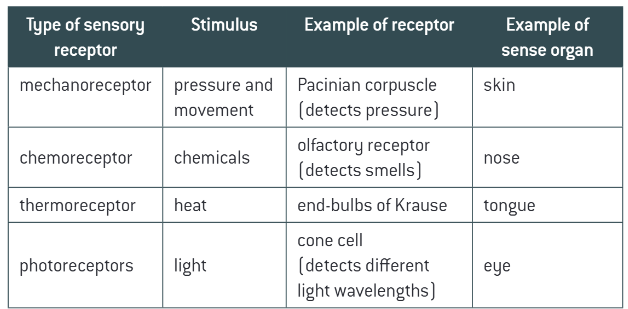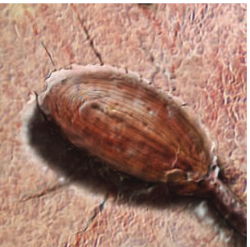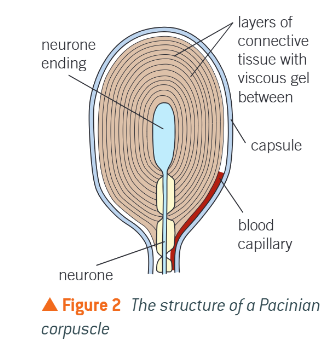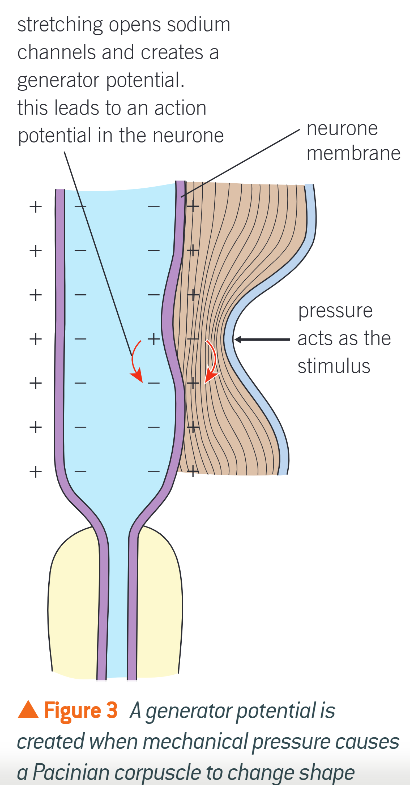Sensory receptors
1/7
There's no tags or description
Looks like no tags are added yet.
Name | Mastery | Learn | Test | Matching | Spaced |
|---|
No study sessions yet.
8 Terms
Features of sensory receptors
Specific to a single type of stimulus
Act as transducer, by converting stimulus into electrical impulse
Sensory receptors role as a transducer
Receptor converts stimulus into nervous impulse called a generator potential
Creates an action potential that passes along sensory neurone
Given it reaches the threshold of -55mV
Main types of sensory receptor present in an animals


Where is Pacinian corpuscle found?
Deep within skin, fingers, soles of feet, genitals, joints, nipples

What is found within membrane of P.C.’s neurone and why?
Sodium ion channels
Responsible for transporting sodium ions across membrane
What does P.C. neurone ending have?
Stretch-mediated sodium channel
When it changes shape, permeability changes
Generator Potential
Change in potential difference due to stimulus
Na+ channels open
Na+ ions diffuse into cell, increasing p.d. to -55mV
Once reaches threshold of -55mV, action potential generated
How a sensory receptor (P.C.) pressure into nervous impulse
In resting state, stretch-mediated Na+ channels in sensory neurone’s membrane too narrow to have Na+ passing thru. HAS A RESTING POTENTIAL
When pressure applied, corpuscle changes shape ; membrane surrounding neurone stretches
Na+ channels widen, Na+ ions diffuse into neurone
This depolarises membrane (changes p.d.). RESULTS IN GENERATOR POTENTIAL
Once generator potential big enough, triggers action potential that passes along sensory neurone.
